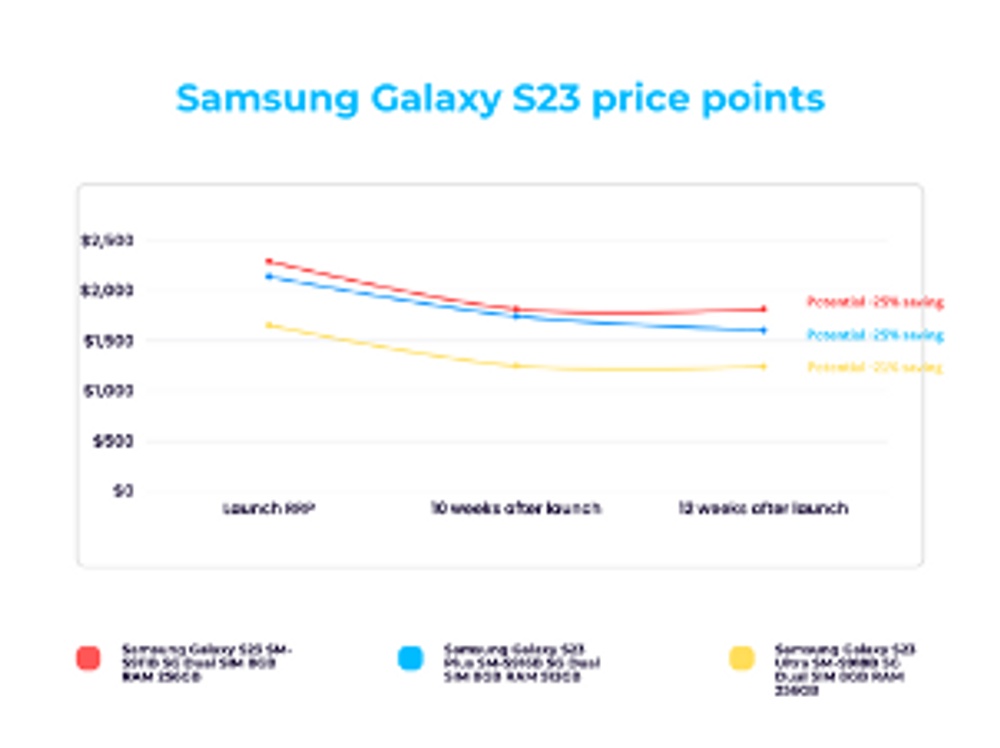Shopping hacks revealed...

The common, sneaky sales tactics that consumers need to be aware of when shopping
In a bid to help shoppers make considerable savings at an otherwise more expensive time, Liisa Matinvesi-Bassett, from the fully impartial price and product comparison service, PriceSpy, is shedding light on the little-known tactics retailers use to encourage consumers to spend.
Liisa Matinvesi-Bassett, New Zealand country manager for PriceSpy, explains: “Retailers constantly run promotions and sales to encourage shoppers to spend. Sometimes these offers are great and deliver sizable savings. However, our research shows some ‘deals’ are not all they seem.”
Five sneaky sales tactics shoppers need to be aware of:
- Rollercoaster pricing
Rollercoaster pricing is when a retailer gradually hikes a product’s price, before suddenly dropping the price, and then advertising a discount based on the highest previous price. For example, claiming a discount of 50% compared to the previous day’s price, but - if compared to the price 30 days ago - it may only be a 20% discount. Or, it may even be more expensive.
Sometimes referred to as a ‘fake deal’, rollercoaster pricing is especially prominent around big shopping periods like Black Friday, the Cyber Weekend and Christmas.
In the EU, new legislations have recently been passed in countries like Sweden and Finland, to help further protect consumers from strategies, such as rollercoasting pricing.
Liisa’s advice on navigating this tactic: “Awareness is the first step towards not falling for rollercoasting pricing strategies.
“If you have an item that you’re looking to purchase, first be sure to check out the item’s price history information, to see what its average price is, so that you can be mindful of sudden price increases. Comparison services, like PriceSpy, offer price history information for free across thousands of products and retailers.”
- Yo-yo pricing
Yo-yo pricing refers to prices going up and down at regular intervals - sometimes, as frequently as every few days or weeks. Prices are lowered for a short period of time in order to boost sales, before they’re suddenly increased again. Retailers might brand these as ‘flash sales’ or ‘one day only’ offers.
Liisa’s advice on navigating this tactic: “With yo-yo pricing, an attractively discounted price is rarely the last opportunity to bag a bargain. Chances are, you’ll see this same price again. Therefore, set up a price alert for the item you are looking to buy on a price and product comparison site, so that you can automatically get notified when a product drops in price to a level that you’re happy to pay.”
- Gender-based pricing
PriceSpy’s research also found instances of brands and retailers offering very different prices for ‘male’ and ‘female’ versions of essentially the same product.
|
Women’s |
Men’s |
Price difference |
||
|
$79 |
$45 |
+24 % (women) |
||
|
$59 |
$49.99 |
+18% (women) |
||
|
$172 |
$154 |
+12% (women) |
||
|
$191 |
$179 |
+7% (women) |
||
Liisa’s advice on navigating this tactic: “Despite how they’re marketed or branded, to help save money, given products are often extremely similar, shoppers may benefit from being open-minded about buying products marketed to different genders. Compare men’s, women’s and also unisex versions to see how different they really are, and then which is cheapest.”
- Bundle pricing
This refers to an item being offered ‘for free or half price’ when purchasing a certain product. Sometimes, retailers run promotions like this when they have surplus stock of the additional item or when they’re looking to boost sales of a certain product. Often, however, the price of the main product will have been hiked to account for the additional 'freebie or additional discount of the second item' - meaning the additional item is not free at all.
Liisa’s advice on navigating this tactic: “Don't get blindsided by seemingly attractive bundle pricing. Do you need, or even want, the additional product? If not, it's not worth buying this bundle. Or if, in fact, you do want this additional product, then make sure you can’t purchase it elsewhere for less individually.”
Example:
- Pressure pricing
The use of phrases such as ‘only one remaining!’, ‘last chance!’, ‘get it before it’s gone!’, ‘this is in 10 people’s baskets right now!’ etc. Pressure pricing is common in both online retail and in physical shops where advertising banners will often alarm shoppers and coax them into buying at a certain time and price. Other tactics include countdown clocks which - often falsely - imply that a sale is about to expire.
Liisa’s advice on navigating this tactic: “Firstly, don’t panic! Look at the availability of the item in other stores (you can do this on a product’s page on PriceSpy) to understand if there’s any real urgency to buy it now. Whilst one retailer may be low on stock, others may have plenty.”
Avoid falling for bad deals and follow Liisa’s top three shopping tips:
- Plan when to make your purchases
Buying certain items out-of-season can deliver big savings. But, not every time! PriceSpy looked at how seasonality affects the price of certain items and produced a list of what to buy and what not to buy during every month of the year.
- Bide your time when buying newly-launched technology
When buying tech, in particular smartphones and TVs, some new products very quickly lose their value. For example, PriceSpy research found the average price for the latest Samsung Galaxy S23 smartphones dropped in price by almost a quarter (-24 percent) just 12 weeks after the initial launch date*. It’s also a common trend for older models to drop in price when a new model is launched.
- Don’t wait for big sales events to snap up a bargain
Sales events like Black Friday, and traditional sales periods like the Boxing Day sales and January sales, can’t be relied upon to get the best deals. For example, in 2021 almost a fifth (19 per cent) of products were more expensive on Black Friday compared to the start of November*. Despite this, Black Friday is still the cheapest day, on average, throughout the year.
About PriceSpy NZ
PriceSpy is a comprehensive price and product comparison service used by millions of consumers every month. It helps consumers find, discover, research and compare products. Since the business first started in 2002, its main objective has been to help consumers make better purchasing decisions. PriceSpy does this by collecting and sharing honest, transparent information about retail stores, products and prices. PriceSpy has 108,000 indexed products, 1,730,000 indexed prices, 584,000 product ratings, 7,510 store ratings and 1183 stores. Providing a fully impartial comparison service for consumers and a deep depository of price data for retailers. PriceSpy is part of Schibsted and is located in Sweden, Norway, Denmark, Finland, New Zealand, France and the United Kingdom. The PriceSpy app is available to download for free, via the App Store and Google Play.



